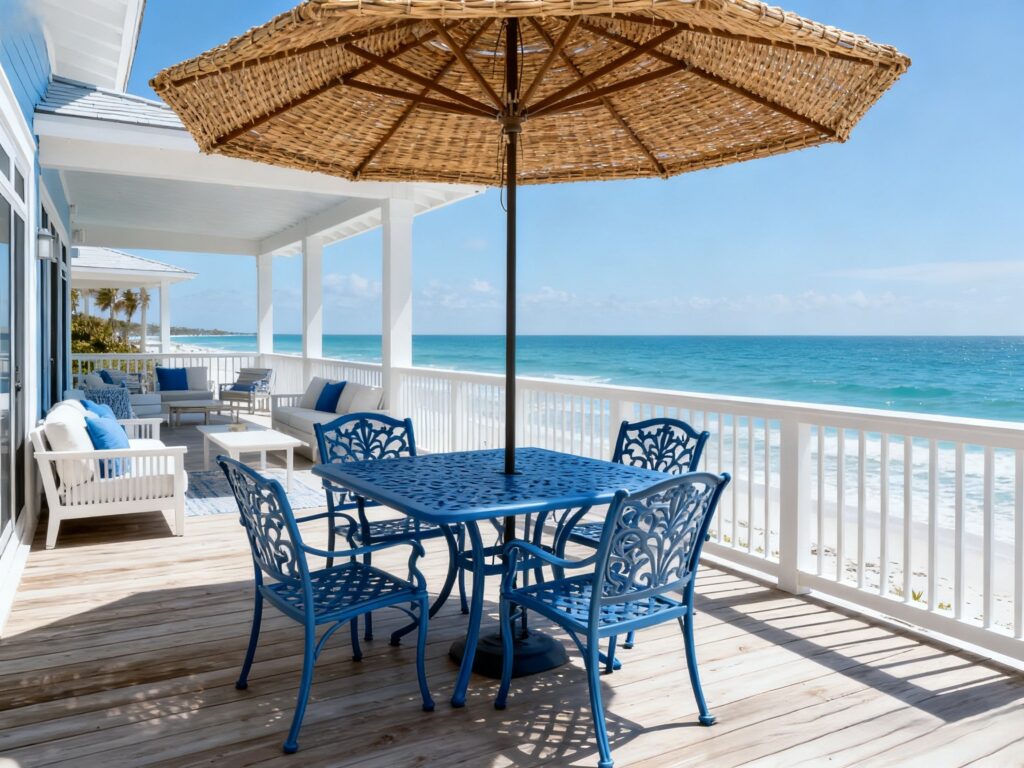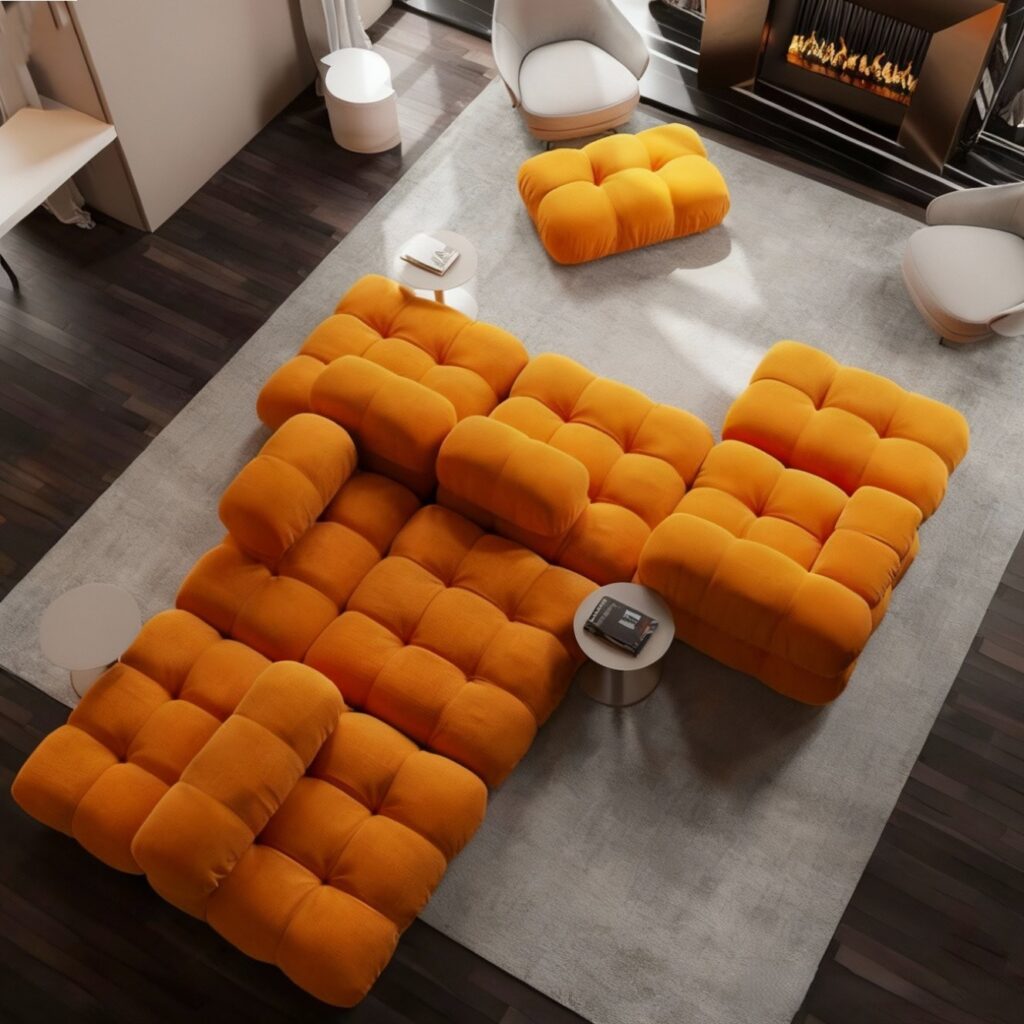What are the types of outdoor furniture fabrics?
Types, Pros & Cons, and Care Tips
- lasie
- 2025-09-11

Why Fabric Matters in Outdoor Furniture
When people think about outdoor furniture, they often focus on the frame — teak, aluminum, or wicker. But in reality, the fabric is just as important. It determines not only the look and feel of your furniture but also how it withstands the elements. From harsh sun to heavy rain, the right fabric can make the difference between a short-lived purchase and a long-lasting investment.
Types of Outdoor Fabrics and Their Pros & Cons
(a) Solution-Dyed Acrylics
Perhaps the most premium choice, solution-dyed acrylic fabrics (like Sunbrella) are designed specifically for outdoor use. The color is locked into the fibers during production, meaning they resist fading even under intense sunlight. They are breathable, water-resistant, and mold-resistant, making them perfect for luxury outdoor sofas and dining chairs. The only downside is cost — they are usually more expensive than other options.
(b) Polyester and Olefin
Though less common in modern outdoor furniture, cotton blends are sometimes used for style-focused cushions. They are soft and comfortable but require treatments to resist water and mildew. Without these treatments, cotton is prone to absorbing moisture and deteriorating quickly outdoors.
(c) PVC Mesh / Textilene
PVC-coated polyester mesh, often known as Textilene, is a strong, waterproof fabric ideal for poolside loungers and sling chairs. It allows water to pass through, so it dries almost instantly. It’s also resistant to stretching and tearing. The trade-off is comfort — mesh is firm and less cozy than fabric cushions, but it excels in low-maintenance applications.
(d) Cotton Blends (Less Common)
Though less common in modern outdoor furniture, cotton blends are sometimes used for style-focused cushions. They are soft and comfortable but require treatments to resist water and mildew. Without these treatments, cotton is prone to absorbing moisture and deteriorating quickly outdoors.
Outdoor vs Indoor Fabrics
Indoor fabrics prioritize comfort and style, while outdoor fabrics prioritize durability and weather resistance. Outdoor fabrics are engineered to handle UV rays, rain, and mildew. For example, an indoor velvet sofa might look luxurious, but it would fade and mold quickly outdoors. Outdoor fabrics sacrifice some softness but provide longevity, making them the smarter choice for gardens, patios, and poolside areas.

How Outdoor Fabrics Are Made – Expanded with Industry Insights
To truly understand why some fabrics outperform others outdoors, it’s key to know how they’re made—and MityLite’s insights help highlight this.
Solution-Dyed Acrylic (e.g., Sunbrella®)
This is widely regarded as the gold standard for commercial outdoor furniture. Color pigments are mixed into the acrylic fibers before weaving, making the fabric highly UV-resistant, colorfast, and fade-proof . The dense weave and dyed fibers mean water simply rolls off instead of sinking in, which adds waterproof and stain-resistant reliability.
Olefin (Polypropylene) Fabrics
This is widely regarded as the gold standard for commercial outdoor furniture. Color pigments are mixed into the acrylic fibers before weaving, making the fabric highly UV-resistant, colorfast, and fade-proof . The dense weave and dyed fibers mean water simply rolls off instead of sinking in, which adds waterproof and stain-resistant reliability.
Spun Polyester
Even more affordable, spun polyester uses printed or coated fabrics. It lacks the color-fastness of solution-dyed variants and can be vulnerable to mildew, although it meets residential needs economically.
Marine-Grade Vinyl
Designed for high-stress applications — often seen on yachts or upscale resort seating — marine vinyl is durable, waterproof, and resistant to UV, mildew, and stains. Only premium versions withstand long-term sun exposure without flaking or cracking.
These manufacturing differences—fiber-level dyeing vs. surface printing, UV or waterproof coating, and structural (weave density)—directly influence how well a fabric stands up over time. For commercial usage, solution-dyed acrylics like Sunbrella’s Vita line are reliable because they combine durability with aesthetic flexibility.

Cleaning Outdoor Fabrics
Maintaining outdoor fabrics is relatively simple. Regular dusting or vacuuming prevents dirt buildup. For deeper cleaning, mild soap and lukewarm water usually suffice. Harsh chemicals should be avoided, as they can damage protective coatings. Removable cushion covers can often be machine-washed, but always check manufacturer instructions.
Weather Resistance and Performance
A well-chosen outdoor fabric can resist sunlight, rain, and temperature changes for years. Acrylics are the most UV-resistant, polyester blends handle moisture well, and PVC mesh excels in waterproofing. Still, no fabric is entirely immune — cushions should be stored during extreme weather to extend their life.
Environmental Impact and Sustainability
Sustainability has become a key concern. Many brands now use recycled polyester or eco-certified acrylics to reduce environmental impact. Some fabrics are designed for easier recycling at the end of their life cycle. Choosing sustainable fabrics not only benefits the planet but also appeals to environmentally conscious consumers.

Conclusion: Choosing the Right Fabric for Your Outdoor Space
When it comes to outdoor furniture, there is no “one-size-fits-all” fabric. The right choice depends on your budget, environment, and lifestyle needs. For example, if you live near the coast, you’ll need fabrics that are highly resistant to salt, UV rays, and moisture. If you’re looking for luxury and long-lasting elegance, solution-dyed acrylics like Sunbrella fabric are worth the investment. On the other hand, if you only need seasonal furniture or have a limited budget, polyester or olefin can provide a more affordable option.
Think about how you will use your outdoor space:
For casual family gatherings, polyester or olefin may be enough.
For a luxury patio dining area, go for acrylic or high-end waterproof outdoor fabric.
For poolside lounges, PVC mesh or Textilene works best because of quick-dry properties.
Ultimately, the best fabric is the one that balances durability, comfort, and style to fit your unique outdoor living space.

you may also like
Cast Aluminum: The Ultimate ROI Investment for Luxury Resorts, Villas, and Hotels
Cast Aluminum: The Ultimate ROI Investment for Luxury Resorts, Villas, and Hotels Table of Contents 1.Shifting the Focus from Initial Cost to Long-Term Value The global hospitality market—especially the luxury sector of resorts, private villas, and high-end hotels—operates under intense pressure to maintain pristine aesthetics while handling non-stop, high-traffic usage. When sourcing outdoor furniture, procurement […]
Modern Minimalist Meets Leather: 5 Design Rules to Avoid the “Old-School” Look
Modern Minimalist Meets Leather: 5 Design Rules to Avoid the “Old-School” Look Table of Contents Introduction: Why Leather Sofas Are Misunderstood Leather sofas have long been a symbol of luxury, comfort, and craftsmanship. However, for many homeowners, they’re often associated with a traditional or even “old-fashioned” look — heavy, dark, and formal. In today’s modern […]


